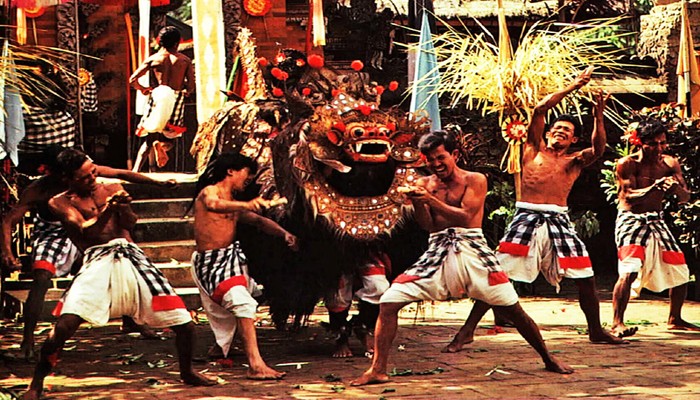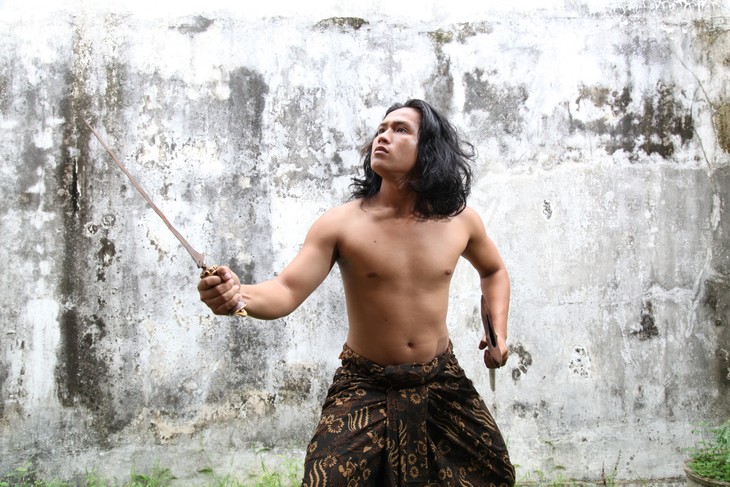(VOVWORLD) - Bali, a resort island of Indonesia, has been known for its jaw-dropping dramatic dances using the whole body. The Balinese like a blend of seriousness and slapstick and their dances reveal this; like a vaudeville show, the audience cheers on the good guys and boos at the bad guys. Today, we have 36-year-old Putu Dudyk Arya Putra, a lecturer at Institute Desain Bisnis Bali, a freelance photographer and a dancer at many Balinese rituals, to tell us more about Balinese dance.
 Putu Dudyk Arya Putra, a lecturer at Institute Desain Bisnis Bali, is also a freelance photographer and a dancer at many Balinese rituals. Putu Dudyk Arya Putra, a lecturer at Institute Desain Bisnis Bali, is also a freelance photographer and a dancer at many Balinese rituals. |
Ngoc Diep: Welcome to VOV24/7, Putu Dudyk. Thank you for joining us today. Bali is famous for so many things and Balinese dance is one of them. Hardly any visitors leave the island without enjoying the island’s dances. Is it true?
Putu Dudyk: Sure. Thank you for having me today. Balinese dance is an ancient dance tradition that is part of the religious and artistic expression among the Balinese people of Bali island, Indonesia. Balinese dance is dynamic, angular and intensely expressive. Balinese dancers express the stories of dance-drama through the bodily gestures including gestures of fingers, hands, head and eyes.
Ngoc Diep: What are the dances about?
Putu Dudyk: Most of the dances in Bali are connected to Hinduism or traditional folk rituals. Certain ceremonies at village temples feature a special performance of a dance-drama, a battle between the mythical characters Rangda, the witch representing the evil, and Barong, the lion or dragon, representing the good. This type of performances was traditionally featured during outbreaks of epidemic diseases, which were believed by the people to be a result of disturbance in the balance of the 'good and bad forces', which were represented by the Rangda and the Barong. The battle usually reconciles in harmony or balance of the Rangda and the Barong, instead of a defeat of the evil.
 Barong dance. (Photo: authentic-indonesia.com) Barong dance. (Photo: authentic-indonesia.com) |
Ngoc Diep: Wow. That’s very interesting. What are the various categories of Bali dance?
Putu Dudyk: Balinese dance is inseparable from religion and based on their religious functions, traditional Balinese dances can be divided into three categories: Wali Dances, Bebali Dances, and Balih-balihan (To watch) Dances.
Ngoc Diep: Can you explain more about each category, please?
Putu Dudyk: Sure. Wali means “sacred,” but the literal meaning of the word isbantén, or offering. This refers to the direct link to deities and is not just a form of entertainment for the Balinese, but a formal exchange of energies. These dances are considered sacred and must be performed in the inner court of the temple.
Bebali dances, usually performed in the middle court of a temple, comprise ceremonial performances. They fall in the middle of sacred and secular. These dances are considered more as entertainment for the deities than as a direct means of contact.
And Balih-balihan, or “To watch” Dances, are often considered secular and take place solely for the entertainment of people. They are performed in the outer court or even outside the temple.
In 2015 in Windhoek, Namibia, UNESCO recognized three genres of traditional dance in Bali, Indonesia, as Intangible cultural heritage.
 Putu Dudyk Arya Putra in a ritual dance Putu Dudyk Arya Putra in a ritual dance |
Ngoc Diep: Balinese dancers learn the craft at an early age, don’t they? And is it difficult to learn it?
Putu Dudyk: That’s true. While the aspiring dancers are taught to dance with their hands before they can walk, official training starts as young as seven. About the dancing technique, in Balinese dance, the movement is closely associated with the rhythms produced by the gamelan, a musical ensemble specific to Java and Bali. Multiple levels of articulations in the face, eyes, hands, arms, hips, and feet are coordinated to reflect layers of percussive sounds.
 Wali (sacred dance) is usually performed in some ritual ceremonies only because it has strong magical powers and only can be performed by specific dancers. (Photo: www.balitourismboard.org) Wali (sacred dance) is usually performed in some ritual ceremonies only because it has strong magical powers and only can be performed by specific dancers. (Photo: www.balitourismboard.org) |
Traditionally, sacred dances can only be performed in temples. However, new choreography has been created due to the demand from the tourists. In the newer creations, choreographers have more freedom over the moves. They use new moves that were considered 'improper' for the sacred dances.
Ngoc Diep: Thank you, Putu Dudyk, for sharing with VOV24/7 very interesting stories about Balinese dance. Please take good care of yourself and hope we will talk more about Balinese culture.
Putu Dudyk: It’s my pleasure. Thank you, too.